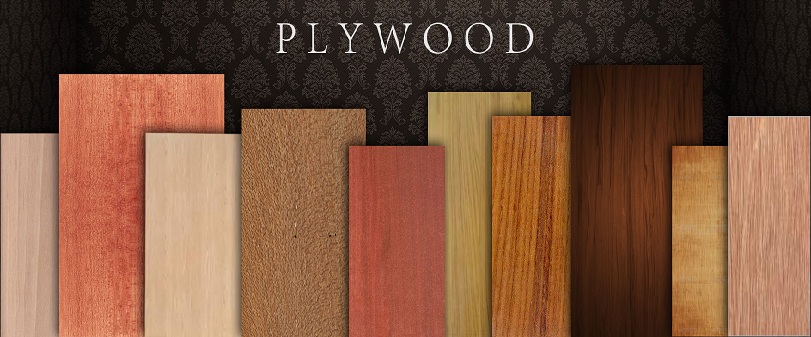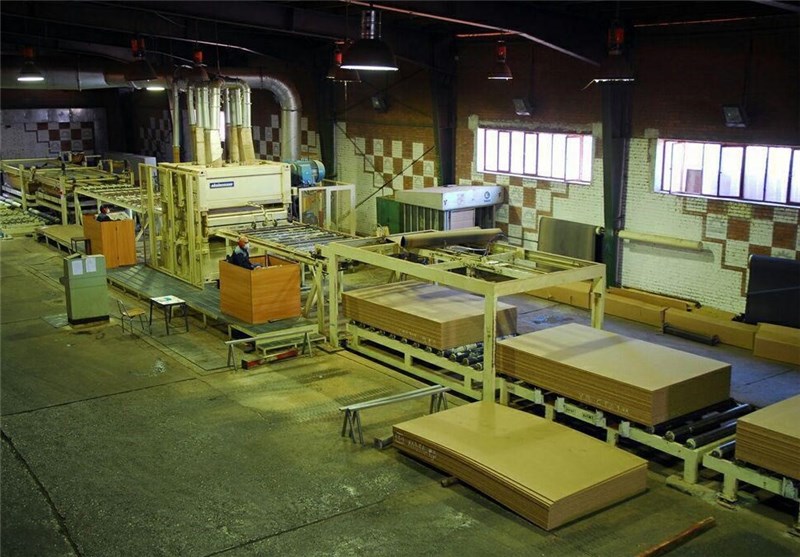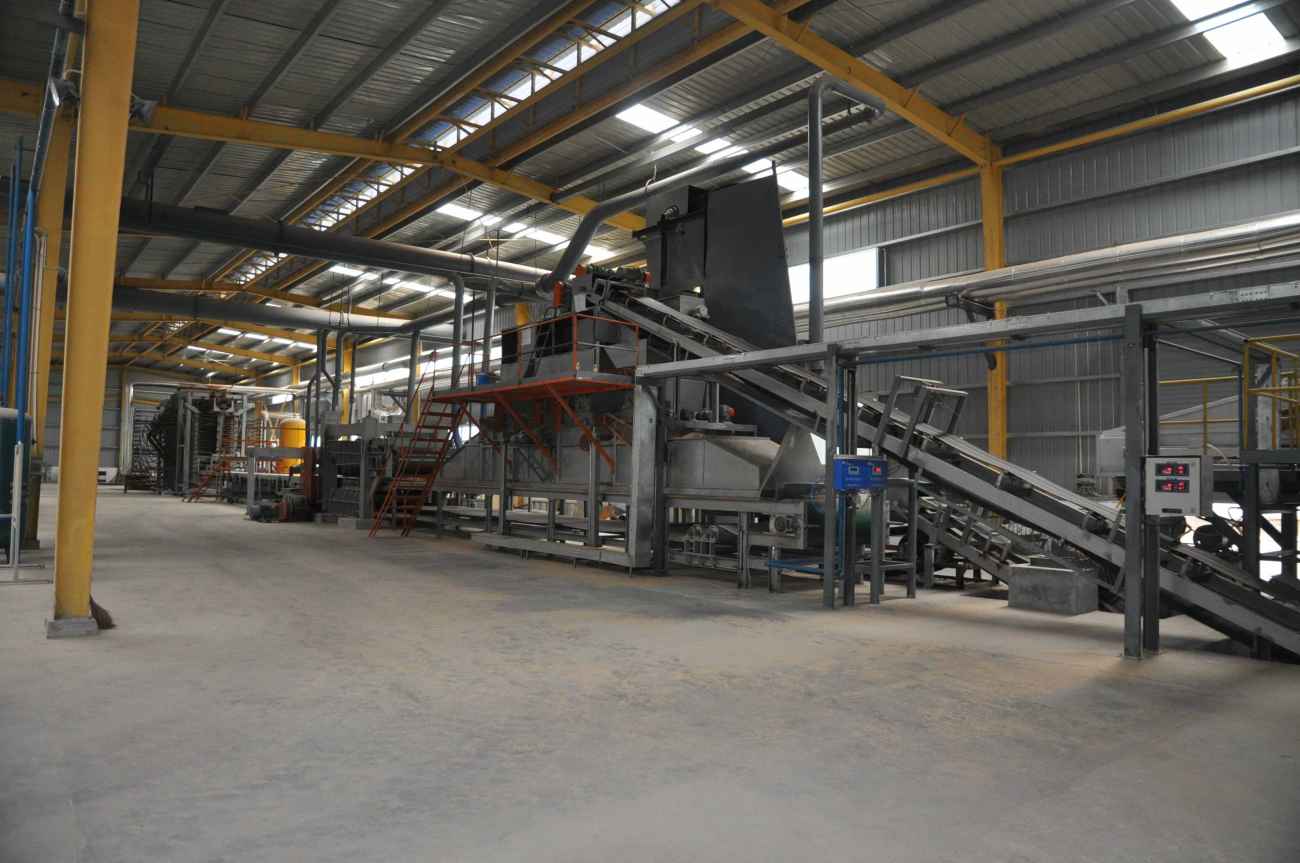At first raw materials (wood waste) are sawn to proper length and then transferred to wood chipper unit and cut into small chips or flakes using two kinds of chipper machines including KG & PESSA to produce chips of a suitable shape and size then the particles is stored in two silos, each with the capacity of 100m3, by pneumatic system after that wood flakes are transferred to wood chips drying unit working with kiln which is heated by synthetic fuel derived from liquid fuel, natural gas and wood dust, hot air outlet temperature is controlled by a regulator which keep the hot air stable. The temperature of Combustion chamber is about 300°C and the hot air outlet temperature is around 135°C.
Manufacturing Process
The process of producing chipboard in Khalkhal chipboard factory:

The fan absorbs the hot air and enters dried particles to cyclone separator where they are separated from hot air. The moisture content of the particles entering the dryer is around 20 to 40 percent and drying reduces the moisture content of the articles to 2 to 4 percent.
Dried particles have different size so after drying the particles are classified by passing through four layer vibrating screen machine. Oversize particles are retained in first layer and will be transferred to hammermill machine again to reduce their size. The particles of second layer are used as core material and particles of third layer are used as surface material of particle boards. In the fourth layer there are sawdust that are used not only to control atmospheric emissions, but also to recover the dust as a by-product fuel for dryer.

After classification the required particles are separated into core and surface materials by sifter separator machine then they are stored separately.
Gluing is the next step. The core and surface materials are transferred to blenders, in which the particles are mixed with resin. Resin used for core layer is different with the resin used for face layer. Urea-formaldehyde is the resin used for particleboard manufacture. The required resin are made from water, base glue and wax. Waxes are added to impart water resistance, increase the stability of the finished product under wet conditions and better sanding that result in smooth-surfaced particle board.
In blending step, core material resin is blended with hardener for because it works as catalyst and will reduce the PH level of glue and increase the acidity of wood so it will accelerate the resin cure and reduce the press time.
The particles are mixed with resin, wax and other additives by means of spray nozzles in a continuous process.
Blenders are designed to discharge the resinated particles into a plenum over a conveyor belt that feeds the blended material to the forming machine.
Forming machine is used to form the resinated particles to mat, in order to achieve this aim the resinated particles which are examined constantly, are laid into the molds with 1cm thick by back and forth movement of the tray on which a deckle frame is placed. The thickness of mat will be reduced in pressing process. the ratio for using surface materials and core materials is 30% and 70% respectively.

Surface materials are used to smooth the face layer and core materials are used to increase the strength of particle boards.
After forming, the mats then are conveyed to hot press. The press applies heat and pressure to activate the resin and bond the particles into a solid board. Press time, pressure and temperature are the most important factors in pressing process.
Basic steps in pressing time:
1. Board (mattress) fed to the press
2. “Daylight” closes
3. Press closure to target (thickness, pressure) – pressure increase
4. Pressure maintained: resin cure
5. Daylight opens: pressure reduced
6. Boards removed
After pressing, the boards are trimmed to obtain standard length and width (25cm * 188cm) and to square the edges then the panels are cooled for at least 48 hours. After cooling the particle board panels are sanded to the final thickness (16 mm thick) and to give good and smooth
surface finish by means of sanding machine. Waste sanding dust is transferred to dust silo for using as fuel.
At the end the sanded particle boards are classified into first, second and third class qualities based on their appearance, quality and other features then the finished products are packaged. Particle boards may also be veneered or overlaid with other materials to provide a decorative surface.
